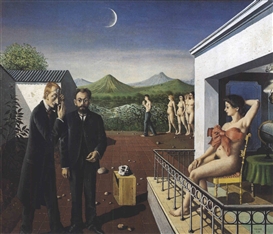The Girl at the Train Station: The Paintings of Paul Delvaux
Paul Delvaux' paintings profoundly reflect his own psyche and emotions many are familiar with, from being trapped in a loveless marriage, to feelings of impermanence and inherent anxiety
Benjamin Blake Evemy / MutualArt
Dec 17, 2021
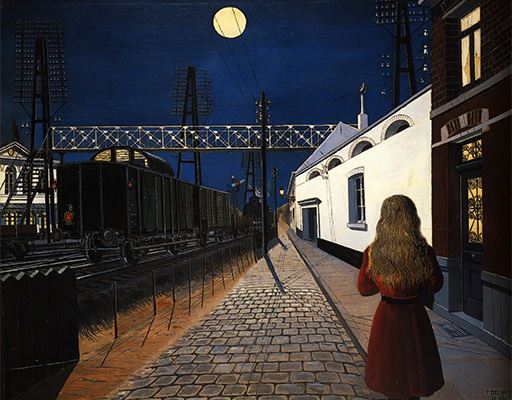
Paul Delvaux was a painter whose works were of a highly individualistic nature. Considered by many as a surrealist but only ever possessing brief associations with the movement itself, Delvaux’s paintings still undoubtedly work on that level. The Belgian painter was mostly known for his depiction of female nudes placed against backdrops of classical architecture and darkened forests, but only to a slightly lesser extent for his skeletal tableaus, and for the psychological undercurrents that tied the two together: Eros and Thanatos — sex and death. He also had quite the obsession with trains.
The Tunnel, 1978, oil on canvas, unknown collection
Delvaux was born in the Belgian province of Liège in September 1897, the son of a wealthy barrister father and musician mother. The latter was extremely controlling and domineering and would go on to become a repressive force on Delvaux’s childhood and adolescent desires. He showed an interest in art at a young age, yearning to become a painter. Instead, he began to study architecture in 1916 at the Académie Royale des Beaux-Arts in Brussels, but due to a weakness in mathematics was soon disqualified, and subsequently dropped out in only his first year. The first watershed moment of his artistic career came when he was on holiday with his family in 1919 and he met the Belgian painter Franz Courtens. The young artist showed Courtens some of his watercolors, causing him to remark to Delvaux’s parents that their son had talent and a great future ahead of him. His parents begrudgingly let him return to the Académie to study painting. He set up his first studio proper in his parents’ house in 1924, and by the following year saw his first solo exhibition come to fruition. He began to paint nudes in the late ‘20s, but few survived, as the artist destroyed fifty or so of his canvases in order to re-use the frames.
1929 marked another event of great significance for Delvaux, not in his artistic life directly, but in his personal one. That year was the first time he met Anne-Marie de Maertelaere, whom he fondly nicknamed “Tam.” The pair fell deeply in love, but Delvaux’s domineering mother intervened on the burgeoning romance, and forced him to promise to never see her again, leaving the man to wallow in the throes of lovelorn misery. This can be found reflected in Delvaux’s paintings created during this period, where the tone is one more detached, more forlorn, more isolated.
Anxious City, 1941, oil on canvas, private collection
In 1934, Delvaux exhibited alongside Salvador Dalí, Giorgio de Chirico, Max Ernst, and René Magritte at the Palais des Beaux-Arts de Bruxelles. The exhibition, entitled Minotaure, was an extremely fitting one for Delvaux, as both De Chirico and Magritte had influenced his work considerably, although Delvaux’s style would continue to evolve over the coming years, his nudes becoming more natural and taking on a further elegance. His work would also reflect the increasing anxiety of the looming world war.
When the Germans invaded Delvaux’s home country of Belgium in 1940, the artist fled to stay with relatives in northern France, but only stayed for around a week before returning to Brussels. He continued to paint during this troubled period but refrained from exhibiting in his war-struck home country. His 1941 painting Anxious City (La ville inquiète), is an apt psychological portrayal of these uncertain times.
Night Train, 1947, oil on canvas, The Museum of Modern Art, Toyama
One of Delvaux’s most famed paintings was created in 1947. The dark and brooding, yet highly erotic Night Train was painted in what was, according to Delvaux himself, a period of intense marital dissatisfaction. The painting itself plays out in the tone of a vivid nightmare, where one isn’t quite sure whether they are in heaven, or in fact, the opposite. The subjects are stoic, frozen in the throes of inertia, perpetually waiting for the train to fully emerge from shadow and take them to some unknown destination. The piece certainly captures what Delvaux must have been feeling at the time, and in his own words regarding its creation, stated that he wished to paint “Boredom, sadness and the desire to get away from it all...”
But Delvaux’s void of a marriage was never anything but, and the signs were there to interpret a decade before he even painted Night Train, in the year of his marriage’s inception.
The Joy of Life, 1937, oil on canvas, private collection
In July 1937, Paul Delvaux had married Suzanne Purnal. He would later go on to admit that it was purely a marriage of convenience. The Joy of Life, painted that same year, is screaming all the tell-tale signs that the union was indeed a doomed one. The male subject stands in a stiff posture, formally dressed, indicative of feelings of dislocation, the antithesis of the main female subject, who stands earnestly undressed in his awkward embrace, offering herself to him without reservation, the bow of girlhood innocence discarded upon the stark wooden floorboards. But the most profound significance is to be found by following the male subject’s gaze toward the open window and what lies through it. An almost identical female nude sits among a mass of overgrown foliage, playing a siren song that calls to the likely newly-wedded man. It is a song of seduction, a song aptly expressing the sentiment of never being truly happy with what you have, even if what you desire is almost exactly the same. Its notes compose a clarion call of freedom, an escape from the conscription to a life devoid of the very essence that makes it livable. The Joy of Life is a striking piece, laying some of life’s complexities bare with keen execution of intellect and no small amount of finesse.
Delvaux received great praise from critics for his exhibition held at the Julien Levy Gallery in New York in 1947, despite the fact that two of his paintings were seized by customs as ‘obscene,’ one getting damaged in the puritan process. 1947 was also the year that past love Tam walked back on the stage of Delvaux’s tumultuous life. A chance encounter at a Saint-Idesbald newsstand provided the circumstances for this. They wasted no time in resuming their romantic relationship, and the following year Delvaux finally divorced his wife. The reunited lovers moved in together. In 1951 they built a coastal home and art studio, and in the October of 1952, after many misplaced years, the couple married.
Solitude, 1956, oil on canvas, unknown collection
In the late 1950s, Delvaux produced a series of paintings that featured a young girl situated at different train stations. Painting from a point of view looking over the shoulder of the faceless young woman, the series doesn’t contain anything overtly surreal or startling, yet seems to strongly hint at some impending misfortune waiting just down the tracks (similar to what is hinted at in Night Train). The artist’s love of trains was one that had been with him for most of his life and stretched back to when Delvaux was a young child, standing fascinated as he beheld the early electric trams in Brussels.
Ecce Homo, 1949, oil on jointed panel, unknown collection
After around a decade of poor health, Tam died in 1989. Delvaux never picked up the paintbrush again. He completely abandoned art. He himself sighed his last a short handful of years later in 1994 and was buried next to his beloved.
Paul Delvaux’s paintings profoundly reflect his psyche. The innate, unsatisfied longing that comes with a loveless marriage, the feelings of impermanence and inherent anxiety found in those who are running away from something — such as the impending Nazi threat, skeletal scenes that are a not-so-subtle nod to mortality, strange and surreal scenes that one gets lost in during long childhood days of unrestrained imagination, and the seething sexual desire that is prone to possess us all. And of course, all of these reflections and themes overlap considerably in Delvaux’s oeuvre, making his artistic vision a highly personal, and subsequently powerful one.
For more on auctions, exhibitions, and current trends, visit our Magazine Page


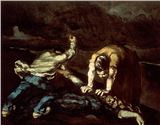

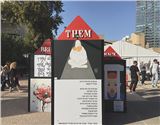

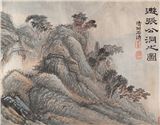
.Jpeg)
.Jpeg)
.Jpeg)
.Jpeg)
.Jpeg)
.Jpeg)
